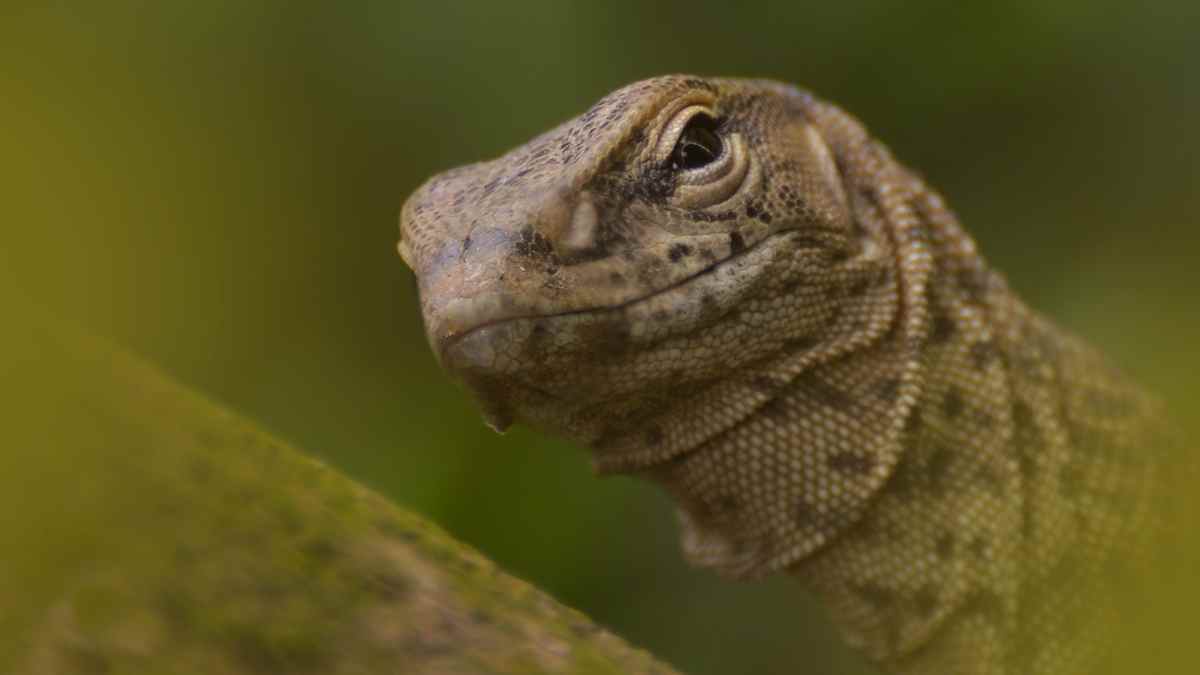Of all lizards and reptiles at large, monitor lizards are arguably the smartest.
Moreover, monitor lizards can make excellent pets and have a reputation for seeking the attention of their owners. So, if you are planning to have a monitor lizard as a pet and want to know more about them, then look no further.
By reading this article, you will discover some of the best monitor lizards you can keep as pets. Be warned, though, these lizards are not for beginners. They require special care, attention, and in many cases, a huge enclosure.
Only keep a lizard in captivity if you know how to look after them!
Do you want to know the qualities that make monitors such great pets and which of them is best for you? Continue reading.
8 fascinating pet monitor lizards you must know.
Some of the best pet monitor lizard species include;
Ackie Monitor Lizard
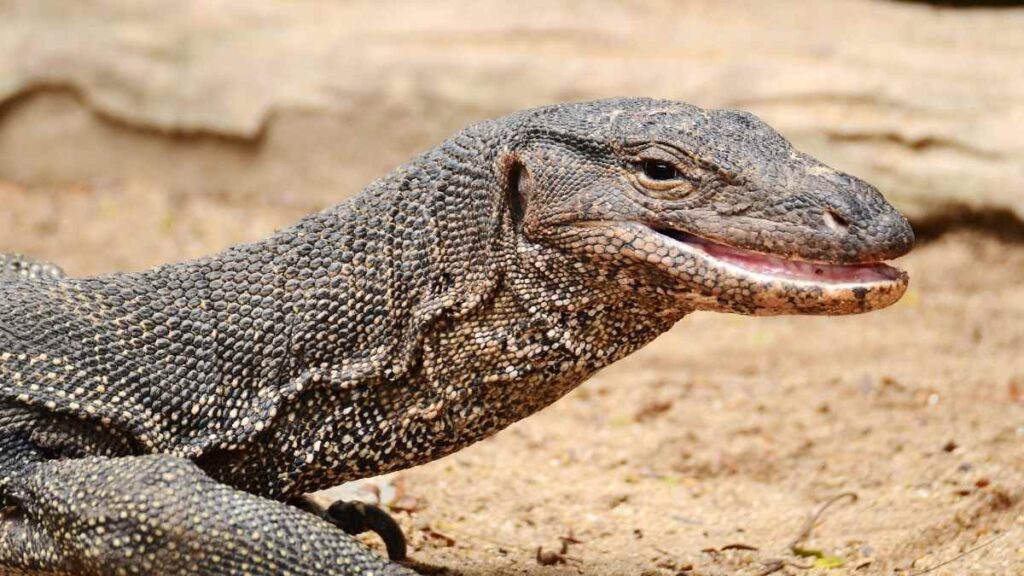
If you have never had a reptile before or this is your first monitor, start with the Ackie. An Ackie monitor lizard is super friendly and easy to tame.
Although their striking semblance with the Komodo dragon gives them an intimidating appearance, Ackie monitors are not scary. They are popular as pets with a mild temperament.
Also, rest assured that you won’t have difficulty feeding Ackie monitors because they have great appetites and eat almost anything. Several morphs of Ackie monitors exist, albeit the most common one is the brown color.
-

Beaded Dragon Fan Exclusive: ‘Original Hipster’ T-Shirt – Wear Your Unique Style with Pride – Unisex t-shirt
£13.00 – £20.50 Select options This product has multiple variants. The options may be chosen on the product page -

Chinese Water Dragon Aquatic Mastery Tee: Dive into Elegance with Our Exclusive Reptile Enthusiast Shirt – Unisex t-shirt
£13.00 – £20.50 Select options This product has multiple variants. The options may be chosen on the product page
Ackies are medium-sized lizards, with a full-grown Ackie averaging around 24 to 28 inches. However, keeping an Ackie monitor lizard is a long-term commitment. They can live for more than fifteen years.
Timor Monitor Lizard
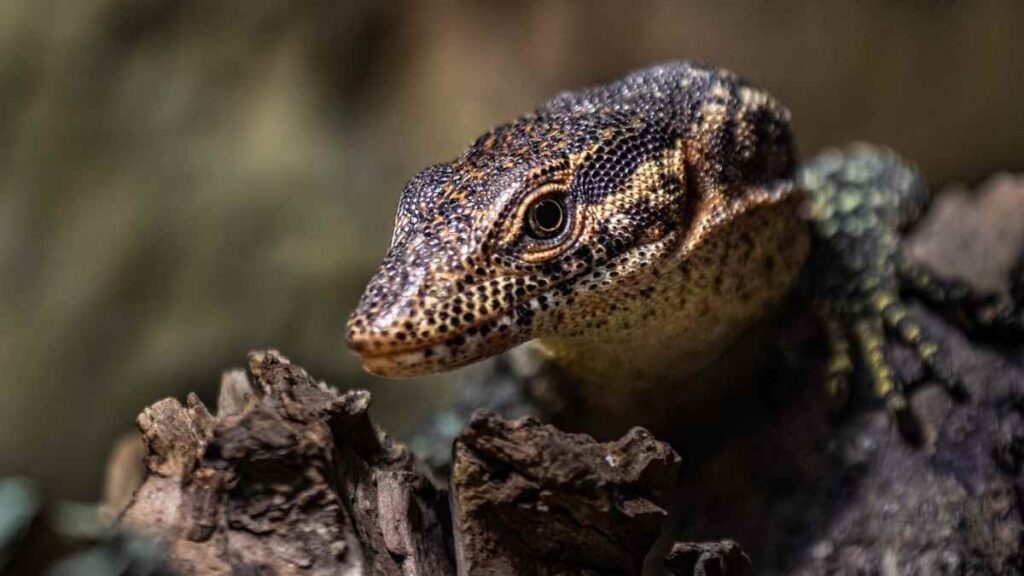
If you want rare species of pet lizards, the Timor monitors are perfect for you as they are uncommon in captivity. Typically, an adult Timor monitor’s length ranges from 14 to 24 inches.
Watching a Timor monitor is much more fun than handling it. A Timor Monitor lizard is neither a large lizard (where you have to worry about its large enclosure needs) nor a small lizard.
The Timor monitor’s diet consists mainly of gut-loaded insects. For example, you can feed Dubia roaches, waxworms, and mealworms to Timor monitor lizards, amongst other things.
Savannah Monitor Lizard
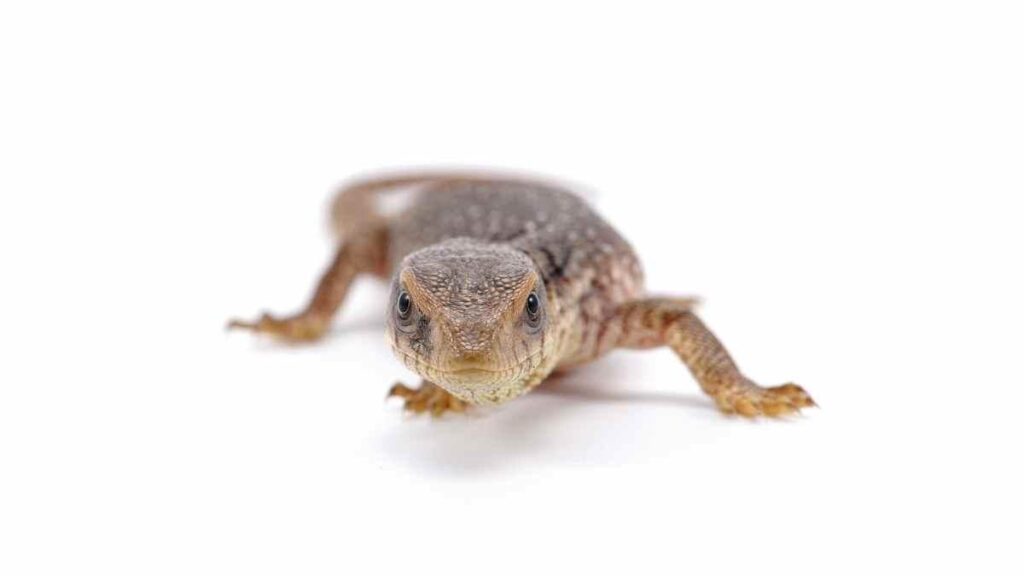
Although the Savannah monitor lizard is a large pet reptile, it is one of the docile pets. You have to handle them often when they are young to tame them, though.
Unlike Ackie monitors, Savannah monitors are not beginner friendly because keeping them healthy is demanding. An adult Savannah monitor can be anywhere from three to four feet.
Also, a Savannah monitor’s average life expectancy is ten years. Some spend up to 15 years, though.
You can feed gut-loaded insects like crickets and roaches to savannahs. However, avoid overfeeding them as they are prone to obesity.
White Throat Monitor Lizard
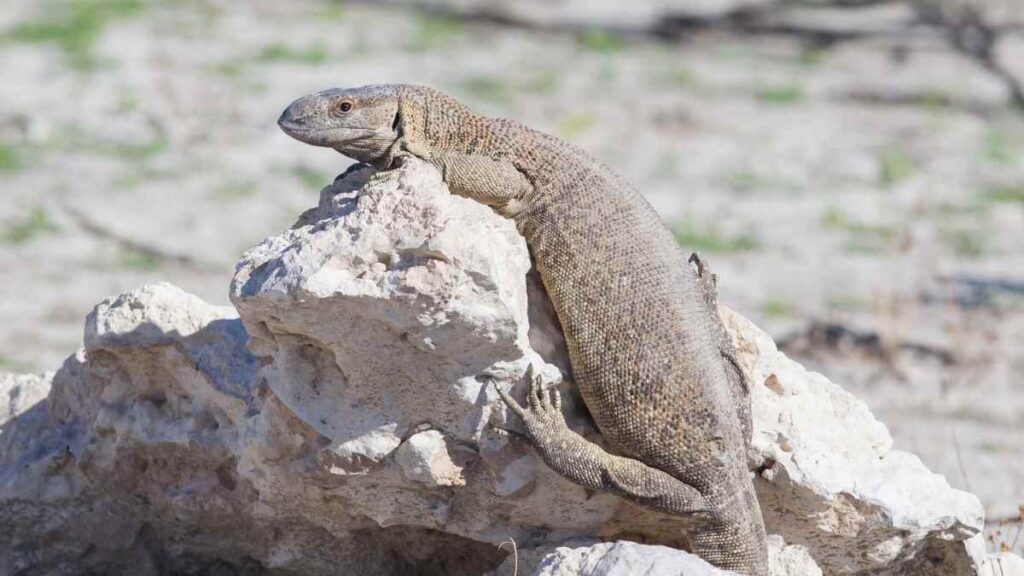
White throat monitor lizards are active and intelligent pets, but like many options on this page, they are not a great option for beginners.
The adult white throat’s length varies from three feet to six feet. Also, their weight ranges from 10 to 18 pounds.
You want to avoid keeping two males in one enclosure as male white-throat lizards are territorial.
The adequate amount of food for white throat monitors depends on its size.
Thus, it would help if you watched how often you feed white throats to ensure you’re not underfeeding or overfeeding it.
Dumeril’s Monitor Lizard
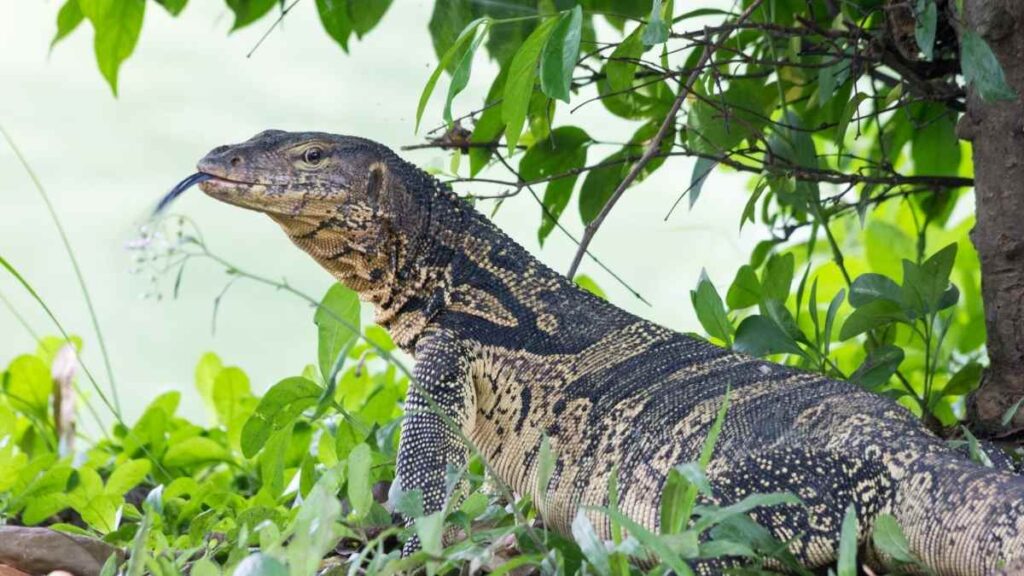
It is best to leave Dumeril’s monitor lizard to experienced keepers only. This is because they are relatively large pets, growing to be around three to five feet (including their tails).
When it comes to housing Dumeril’s monitor lizards, you can choose to dedicate a small room to them or provide an enclosure twice their length.
Their lifespan is between 8 to 12 years, and their menu is comprehensive as they eat insects (crickets and roaches), crabs, mice, and other varieties.
Black Throat Monitor Lizard
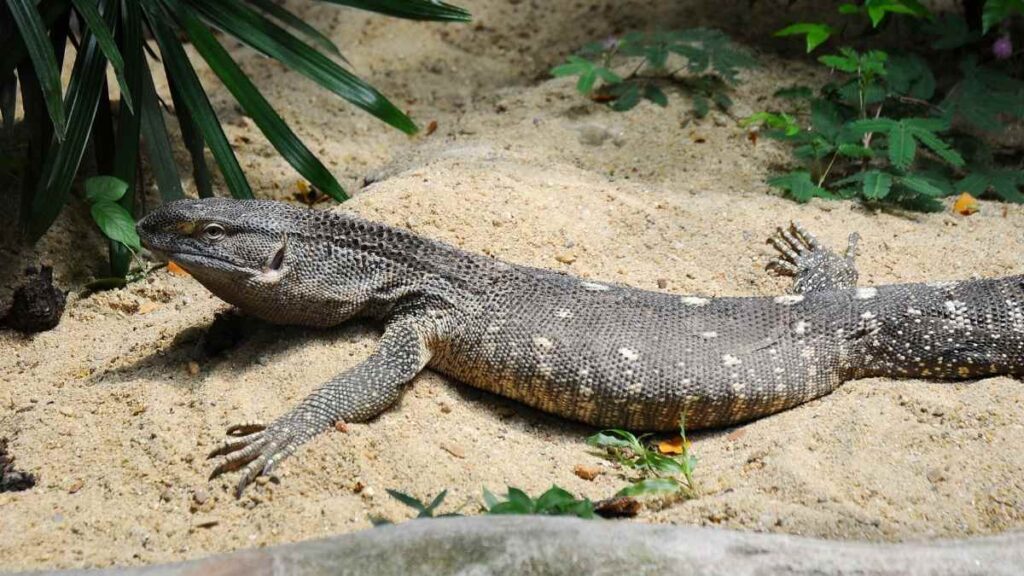
Black-throated monitors are giant reptiles. The adult black throat can grow to be about seven feet long and weigh over 60 pounds!
They are semi-arboreal creatures; they spend more time up on trees in the wild. Black throat monitors are active pets and need regular interaction with their human owners.
If you do not handle them regularly, black throats may become aggressive. When angry (stressed or threatened), black throat monitors hiss and puffs up their bodies.
Whenever you notice this puffing up in your pet, give them space and come back only when they show signs of calm because they may bite whenever they feel threatened.
The black throat’s lifespan is around 20 years.
Asian Water Monitor Lizard
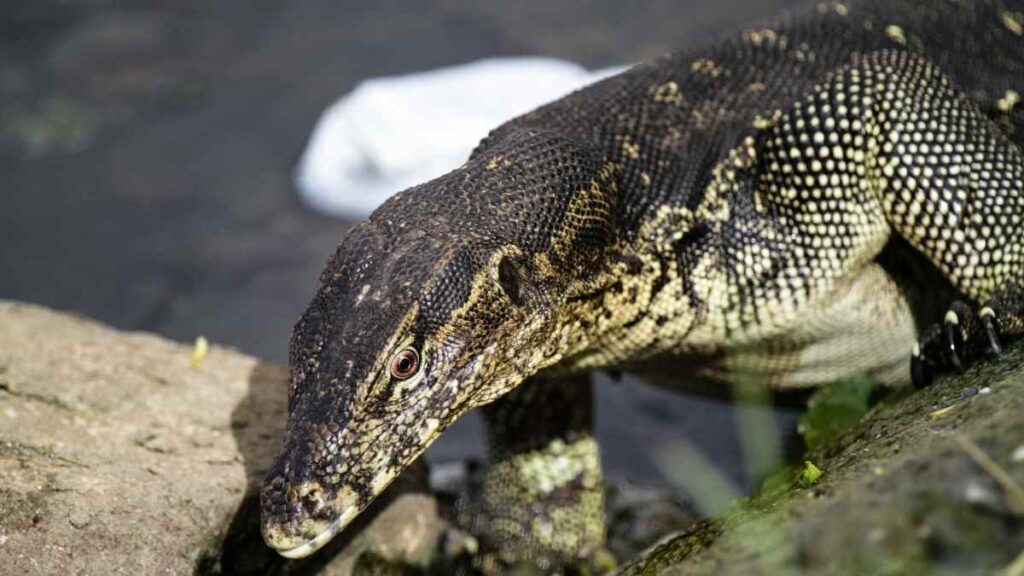
Asian water monitors are massive reptiles. They are the third longest lizards in the world, behind crocodile monitors and Komodo dragons, and can weigh around 150 pounds!
While the Asian monitor’s average life expectancy is around 15 years, it can live for up to twenty years if you care for it properly. Asian water monitors are playful and intelligent pets.
Although Asian water monitors are great pet reptiles, many pet owners are not well equipped or ready to take on the responsibility of caring for them.
For example, they grow in size very quickly, and their housing requirements are complex. In addition, you will need to provide a water source, climbing options, and hiding places in the enclosures.
Providing all of these may be too much for a beginner.
Pygmy Mulga Monitor Lizard
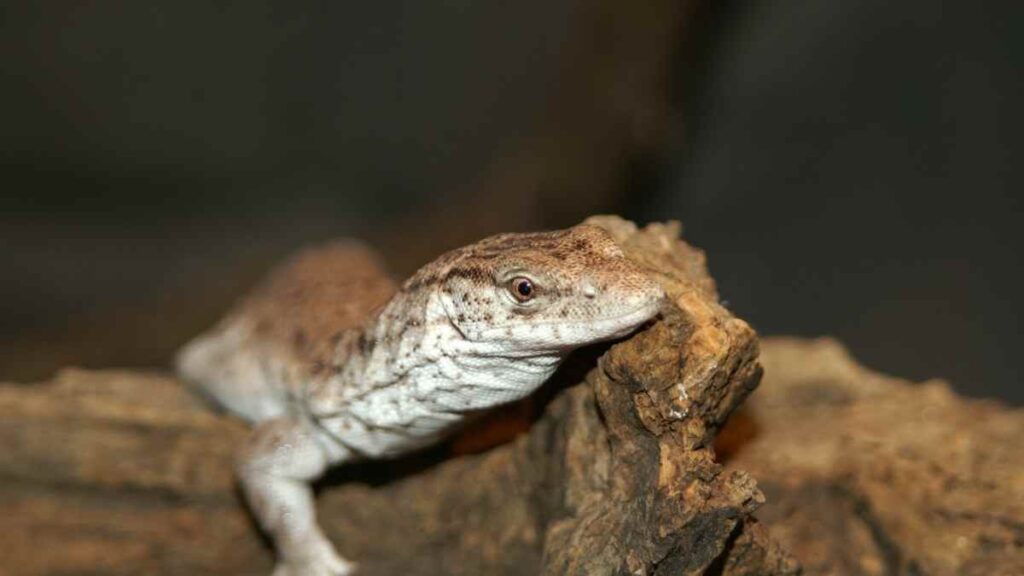
Pygmy mulga monitor lizards are relatively smaller than most of the other monitors. Their average size is around 30 to 40 centimeters. Also, they are arboreal creatures.
Because of their small size, a 1.6×1.6×3 feet enclosure will house two adult pygmy monitors without hassle. A thin layer of substrate is all you need for pygmy monitors as they spend most of their time climbing.
Pygmy monitors are pretty active and do well with handling. Also, they can live for around eight years (or more).
Conclusion
Finally, before deciding which of the monitors above to choose as pets, ensure you do further research. Also, take note that most monitors are large and require large enclosures.
It would also help to consider their lifespan; some have long life expectancies and require a long-term commitment.
In addition, you should be ready to make provision for the UV lighting, humidity, temperature, and dietary needs.
Just be sure you’re committed to keeping the reptile healthy.
Good luck!

